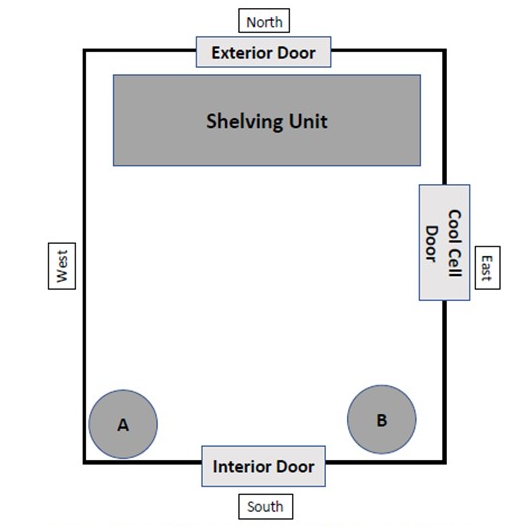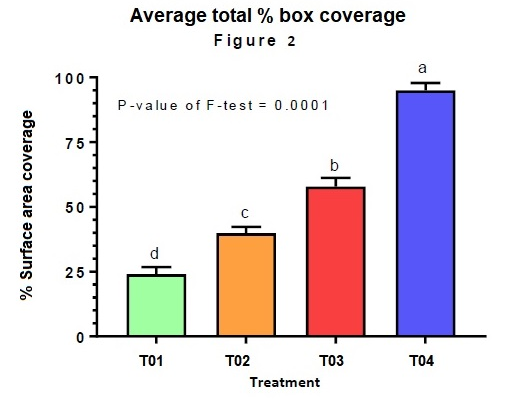



Automatic foggers fall short in disinfecting hog-farm supplies
Preventing fomites from carrying pathogens into hog farms is a daily biosecurity priority. Decontamination rooms where aerosolized disinfectants are applied to incoming supplies are an increasingly common practice, especially on sow farms. However, it remains unclear just how effective typical disinfection protocols are and whether they may lend a false sense of security.To gain a better understanding, Kristen Leuck, veterinary student at the University of Illinois, conducted a study to determine how well current fumigation-room practices perform in terms of decontaminating supplies.1 More specifically, she evaluated the surface-area coverage of disinfectants applied with automatic and manual foggers.
The fumigation room
Leuck conducted the study using a fumigation room (1.8 by 2.1 by 2.4 meters) within a commercial sow farm, with a three-tier, wire shelving unit located on the north side of the room. The room included a 0.6-meter ventilation fan located on the east side of the room to exhaust air following the disinfection process. (See accompanying diagram.)
Two automatic foggers and a manual pump sprayer applied an accelerated hydrogen peroxide disinfectant at a 1:16 dilution, according to the manufacturer’s recommendation, as follows:
- Fogmaster® 5330: This was an automated fogger that emits particles at an adjustable size of 15 to 40 microns at a rate of 0 to 120 mL per minute. It has a stationary neck piece, which meant disinfectant was emitted at a fixed angle. Leuck set the flow rate to the maximum setting on the adjustable nozzle.
- Hurricane Ultra II: This automated fogger emits particles at a size of 5.5 microns at an adjustable rate of 0 to 283 mL per minute. It has a tilt-locking neck, which allows the spray angle to be adjusted. Again, the flow rate was set at the highest setting of 283 mL per minute.
- Manual pump sprayer: This was a Chapin 20003, 3-gallon lawn and garden sprayer, which emits a flow rate of 1,514 to 1,894 mL per minute.
The treatment groups
Leuck used four new, white cardboard boxes for each trial to mimic typical supply boxes, and explained to Pig Health Today, she added purple clothing dye (at a 1:20 ratio) to the disinfectant solution in order to better identify coverage.
Four treatment groups were established, with each trial replicated three times. The trials were designated as:
- T01: One Fogmaster Jr. 5330 placed in location A
- T02: One Hurricane Ultra II placed in location A
- T03: Two Hurricane Ultra II placed in location A and B
- T04: Manual sprayer, disinfectant applied by hand
As noted in the accompanying diagram, fogger location A was on a shelf 0.58 m from the ceiling in the southwest corner of the fumigation room. Fogger location B was on the floor in the southeast corner of the room.

For T02 and T03 the Hurricane fogger in location A was pointed downward at 80°; for T03 the fogger in location B was pointed upward at 130°. For all three of these trial groups the foggers ran for 10 minutes, followed by the ventilation fan for another 10 minutes.
The manual sprayer operated in T04 was used to spray disinfectant on all surfaces of the boxes until visual coverage was achieved. “On average it took 1 minute to cover the box with disinfectant for a total of 4 minutes per trial,” Leuck noted. “These boxes were placed on the shelves in the same manner as for the automatic fogging trials and were not manipulated during the spraying process to expose surfaces.”
In all of the trials the boxes were removed from the fumigation room and allowed to dry for 10 minutes.
Leuck used imaging software to determine the surface-area coverage on all sides of all boxes by evaluating the hue, saturation and brightness of the purple-dyed disinfectant.
The findings
As shown in the accompanying chart, T04 produced the most thorough disinfectant coverage at 95.08 percent, followed by T03 (57.84 percent), T02 (39.88 percent) and T01 (24.02 percent).

“Regardless of the automated fogger’s location, complete surface coverage was not achieved,” Leuck said. “Manually spraying supplies may be the most reliable method until improvements are made in fumigation room practices.” She added that it’s important that the surfaces appear saturated.
Also from this study, Leuck identified recommendations to improve fumigation room procedures, such as:
- Establish clean/dirty lines for the fumigation room’s exterior entrance. A physical barrier, such as having a shelving unit just inside the door on which to place supplies, may help.
- Create a checklist for supplies entering the farm, including fogging procedures, which can also assist with traceback if a disease outbreak occurs.
- Remove outer packing in which supplies arrive to the farm, which allows the disinfectant to contact the actual supplies that will enter the farm. Leuck noted that research shows that cardboard is ineffectively disinfected no matter the process.
- Space supplies on shelves to allow disinfectants to reach all surfaces.
- Train workers to watch for empty fogger reservoirs and measure proper dilutions to maintain fogging-machine reservoirs.
- Never use the fogging chamber for storage.
| References | ||||
|---|---|---|---|---|
| 1 Leuck K, et al. | ||||
| (2020) | Evaluation of location and fogger type on disinfectant surface area coverage of supplies entering a commercial sow farm.. Student Research Presentations, 51st Am Assoc Swine Vet Annual Meeting. | 2020;58. |








